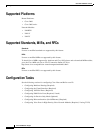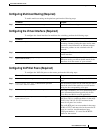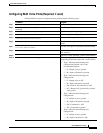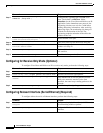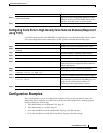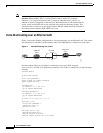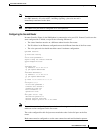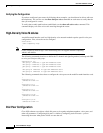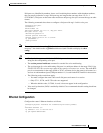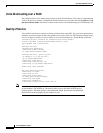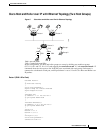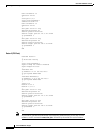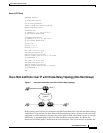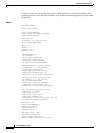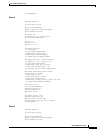
Cisco Hoot and Holler over IP
Configuration Examples
20
Cisco IOS Release 12.1(5)T
Verifying the Configuration
If you have configured your routers by following these examples, you should now be able to talk over
the telephones. You can also use the show dial-peer voice command on each router to verify that the
data you configured is correct.
To verify that an audio path has been established, use the show call active voice command. This
command displays all active voice calls traveling through the router.
High-Density Voice Modules
A multiflex trunk interface card in a high-density voice network module requires special voice-port
configuration. First, select the card to configure:
voice-card 6
codec complexity high
!
Note Codec complexity must be high. Voice multicasting does not support medium complexity,
which is the default.
The following commands show how to define the T1 channel and signaling method, and map each DS0
to voice port slot/port:ds0-group:
controller T1 6/0
ds0-group 1 timeslots 1 type e&m-immediate-start
ds0-group 2 timeslots 2 type e&m-immediate-start
ds0-group 3 timeslots 3 type e&m-immediate-start
…
ds0-group 22 timeslots 22 type e&m-immediate-start
ds0-group 23 timeslots 23 type e&m-immediate-start
The following commands show how to configure the voice ports on the multiflex trunk interface card:
!
voice-port 6/0:1
connection trunk 111
!
voice-port 6/0:2
connection trunk 111
!
voice-port 6/0:3
connection trunk 111
…
voice-port 6/0:22
connection trunk 111
!
voice-port 6/0:23
connection trunk 111
Dial Peer Configuration
Cisco IOS software uses objects called dial peers to tie together telephone numbers, voice ports, and
other call parameters. Configuring dial peers is similar to configuring static IP routes—you are
instructing the router what path to follow to route the call.



